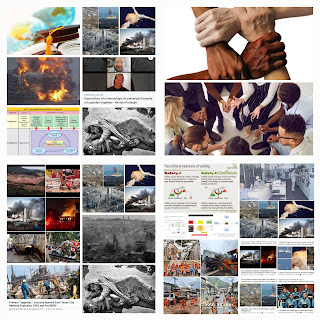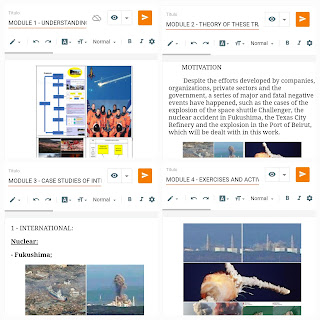Prevent Tragedies - Lessons learned from Texas City Refinery Explosion 2005 and RISK MANAGEMENT modules, AND THE PROACTIVE SAFETY METHOD, RISKS AND EMERGENCIES
Figure 1 - Texas City Refinery Explosion 2005
Lessons learned from Texas City Refinery Explosion 2005 and ProSREM
Reference: Organizational Accidents Revisited - James Reason
Background
In March 2005, a hydrocarbon vapor cloud exploded at BP’s Texas City refinery, killing 15 workers and injuring over 170 others. The site was designed to convert low octane hydrocarbons, through various processes, into higher octane hydrocarbons that could be blended into unleaded petrol. This was the second-largest oil refinery in Texas and the third-largest in the US. BP acquired the Texas City refinery as part of its merger with Amoco in 1999.
The refinery was built in 1934 but had been badly maintained for several years. A consulting firm had examined conditions at the plant. It released its report in January 2005, which found many safety issues that included ‘broken alarms, thinned pipe, chunks of falling concrete, bolts falling 60ft and staff being overcome with fumes’. The refinery had had five managers since BP had inherited it in its 1999 merger.
I visited a BP site in Sale Victoria (Australia) in 2001 and was impressed by its various safety management systems. They looked very sophisticated on paper in their fat ring binders. They included a Management of Change (MOC) process, a BP Pre-Startup Safety Review (PSSR), and (see more later ) an impressive overriding safety process called the Operating Management System (OMS). I came away thinking ‘these are the good guys.
After remedial work had been completed on the 170 ft raffinate tower (used for separating lighter hydrocarbon components), the PSSR was conducted. Its purpose was to establish that safety checks had been carried out and that all non-essential personnel was clear during the start-up. Once completed, the PSSR would be signed off by senior managers, but these essential safety procedures were not completed. These included an inoperative pressure control valve, a defective high-level alarm, and a defective sight tower-level transmitter that had not been calibrated. It was also discovered that one of the trailers, used to accommodate contractors, was too close to the process and thus liable to severe damage in the event of an explosion.
The explosion occurred on 23 March 2005. According to BP’s own accident report, the direct cause was ‘heavier than air hydrocarbon vapors combusting after coming into contact with the ignition source, probably a running vehicle engine’. The hydrocarbons came from the liquid overflow from the blowdown stack following the activation of the splitter tower’s over-pressure protection system. This, in turn, was due to the overfilling and overheating of the tower contents.
Both the BP and the Chemical Safety and Hazard Investigation Board reports identified numerous technical and organizational failures at the refinery and within corporate BP. These organizational failings included:
• Corporate cost-cutting.
• A failure to invest in the plant’s infrastructure.
• A lack of corporate oversight on both safety culture and accident investigation programs.
• A focus on occupational safety (lost time injuries) and not process safety.
• A defective management of the change process.
• The inadequate training of operators.
• A lack of competent supervision for start-up operations.
• Poor communications.
• The use of outdated and ineffective work procedures.
Technical failures included the following:
• A too-small blowdown drum.
• A lack of preventative maintenance on safety-critical systems
such as imperative alarms and level sensors.
• The continued use of outdated blowdown drum and stack technology when replacements had been feasible alternatives for several years.
BP was charged with criminal violations of federal environmental laws and was named in several lawsuits from victims’ families. The Occupational Safety and Health Administration (OSHA) gave BP a record fine for hundreds of safety violations. In 2009, OSHA imposed an even larger fine after claiming that BP had failed to implement safety improvements after the disaster. In 2011, BP announced it was selling the refinery to pay for ongoing compensation claims and remedial activities following the Deepwater Horizon disaster in 2010.




Comentários
Postar um comentário